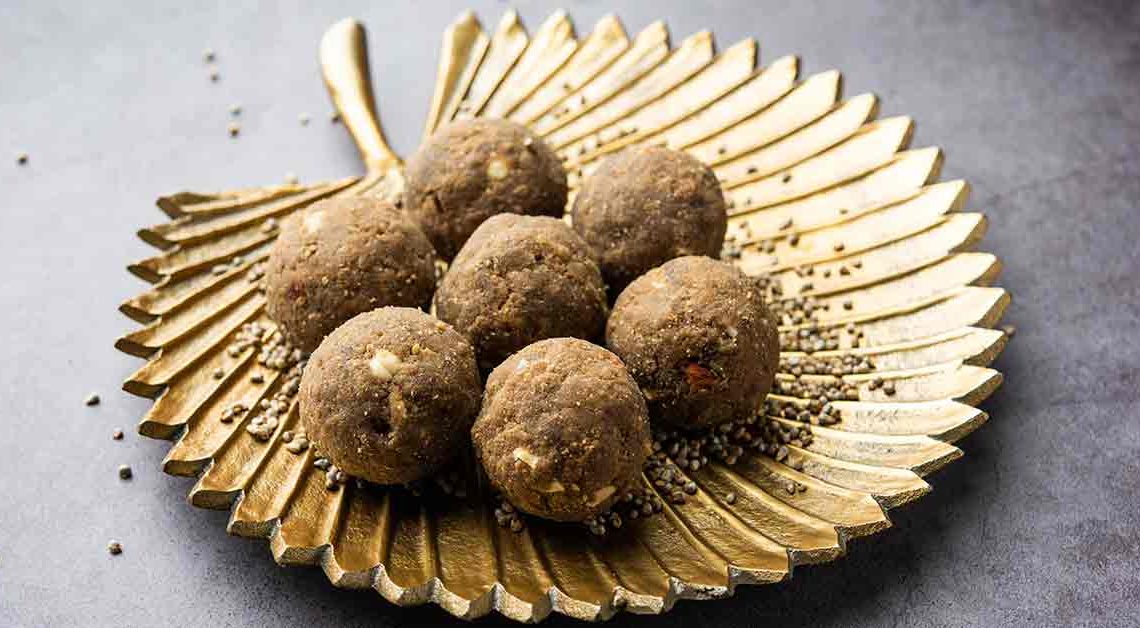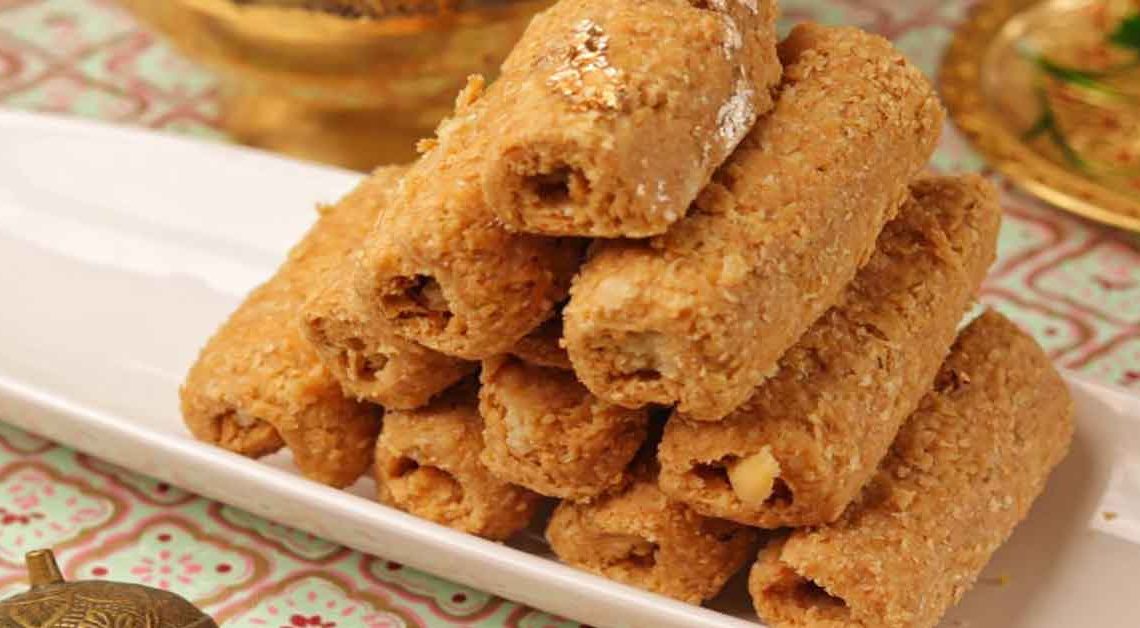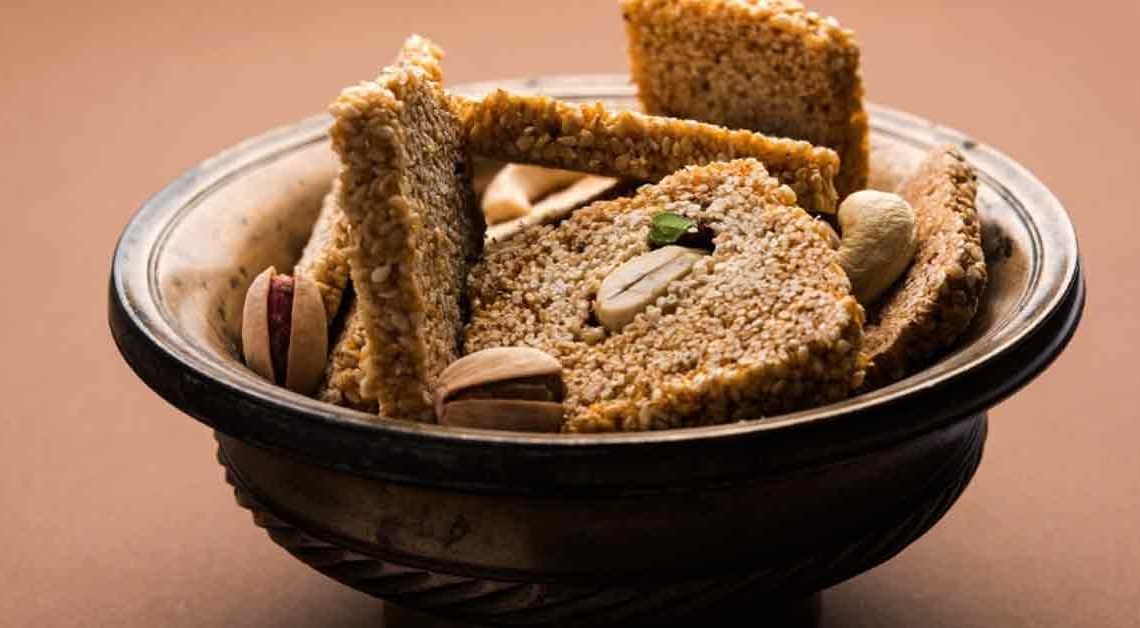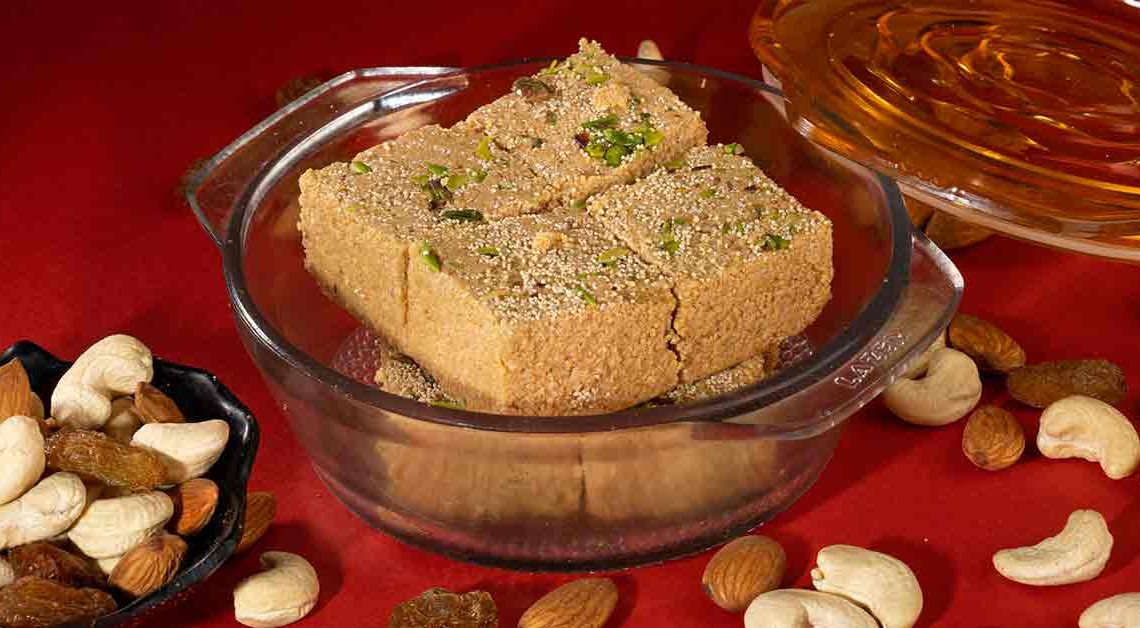Wholesome Delights: Bajra Ladoo

Welcome to a culinary journey on Mithainama that fuses the charm of tradition with the excitement of innovation – the world of Bajra Ladoo! Our food blog is your gateway to discovering the delightful realm of these nutritious and scrumptious treats that have stood the test of time.
Bajra, also known as pearl millet, has been a staple in Indian households for generations. Its earthy flavor and remarkable health benefits have earned it a special place on our plates. But what happens when this humble grain takes a playful turn and transforms into the beloved Bajra Ladoo? Join us as we unravel the secrets behind the centuries-old stories of the recipe.
Let’s roll, mix, and savor our way through tradition and innovation, one wholesome bite at a time.
Origin of Bajra Ladoo
The origin can be traced back to India, where bajra (pearl millet) has been a staple crop for centuries. Bajra is a drought-resistant grain that thrives in arid and semi-arid regions, making it a crucial food source in areas with limited water availability.
Bajra has long been valued for its nutritional benefits, being rich in complex carbohydrates, fiber, protein, and essential minerals like iron and magnesium. It has played a vital role in traditional Indian diets, particularly in regions like Rajasthan, Gujarat, and other parts of North India.
Over time, the recipe for Bajra Ladoos has likely evolved, with variations incorporating different ingredients and techniques. In recent years, there has been a renewed interest in traditional foods, including bajra, due to their health benefits and connection to heritage. This has led to a resurgence in the popularity of Bajra Ladoos and a creative exploration of new flavors and presentations while preserving the essence of this classic Indian treat.
History of Bajra Ladoo
The history is deeply intertwined with the cultural and culinary heritage of India. Bajra, or pearl millet, has been cultivated in the Indian subcontinent for thousands of years, and its use in various culinary preparations, including ladoos, dates back to ancient times.
The origins can be traced to traditional Indian practices of using locally available ingredients to create nourishing and energy-rich foods. In regions with limited resources and challenging climatic conditions, such as Rajasthan and parts of North India, bajra emerged as a crucial staple crop due to its resilience to drought and harsh environments.
In historical contexts, ladoos were associated with auspicious occasions and offerings to deities in temples. The circular shape of ladoos symbolized unity and completeness, adding a spiritual dimension to their significance.
Cultural Significance
Bajra Ladoo holds significant cultural value within the Indian culinary landscape, symbolizing traditions, celebrations, and the deep-rooted connection between food and culture. Its cultural significance is multi-faceted and reflects various aspects of Indian society and heritage:
Nutritional Nourishment: Its cultural significance lies in its nutritional value. In regions where bajra is a staple, such as Rajasthan and Gujarat, these ladoos have historically provided sustenance and energy to people engaged in physically demanding activities, especially in arid and harsh environments.
Festive Celebrations: These are often associated with celebrations and festivals. In rural communities, these ladoos have been a traditional offering during auspicious occasions, marriages, and festivals like Makar Sankranti and Lohri.
Regional Diversity: It highlights the diversity of Indian cuisine. This diversity underscores India’s rich cultural mosaic, showcasing how one dish can vary widely in taste and preparation while maintaining its core essence.
Where is Bajra Ladoo Famous?
Bajra Ladoo is particularly famous in regions of India where bajra (pearl millet) is a staple crop and forms an integral part of the local diet. Here are some areas where Bajra Ladoo is especially well-known and appreciated:
Rajasthan: It has a strong association with Rajasthan, where bajra is a major crop due to the arid climate. These ladoos are a significant part of Rajasthani cuisine, enjoyed as a traditional snack and also offered during festivals and celebrations.
Gujarat: Another state where Bajra Ladoos are popular is Gujarat. The use of bajra in various culinary preparations, including ladoos, is common due to its nutritional value and suitability for the local climate.
Punjab: In Punjab, these are often enjoyed during the Lohri festival, a winter harvest celebration. The ladoos’ warmth and energy-rich composition align well with the festive spirit of Lohri.
Interesting Facts and Trivia
Certainly, here are some interesting facts and trivia related to Bajra Ladoo:
- Bajra, the main ingredient of ladoo, has been cultivated for over 4,000 years and is considered one of the oldest grains used by humans.
- Bajra is known for its ability to grow in arid and semi-arid conditions with limited water availability, making it an essential crop in regions with challenging climates.
- In some Indian communities, bajra is associated with folklore and myths. It’s believed to have protective and auspicious qualities, and Bajra Ladoos are sometimes given to pregnant women for blessings and well-being.
- In states like Gujarat and Maharashtra, these are enjoyed during Makar Sankranti, a festival that marks the transition of the sun into the zodiac sign of Capricorn. It’s a celebration of the harvest and is often accompanied by flying kites.
- These are revered for their energy-boosting properties, making them a favored snack during winters and for activities that require physical stamina.
Did You Know?
Bajra Ladoos are not just delicious but also loaded with nutrients?
- Bajra, the main ingredient, is a fantastic source of dietary fiber, B vitamins, iron, magnesium, and antioxidants. These ladoos offer a unique blend of nutrients that contribute to overall health.
- These delectable treats are rich in complex carbohydrates and slow-releasing sugars, providing sustained energy levels throughout the day. Whether it’s a busy workday or an active weekend, Bajra Ladoos are the perfect pick-me-up.
- Bajra is known to support heart health. The high fiber content helps regulate cholesterol levels, while magnesium and potassium contribute to maintaining a healthy blood pressure. Indulging in it can be a tasty way to show your heart some love.
- Fiber is a digestive superhero, and Bajra Ladoos are brimming with it! These ladoos aid digestion by promoting regular bowel movements and preventing constipation.
- For those with gluten sensitivities or celiac disease, ladoos are a wonderful option. Bajra is naturally gluten-free, making these ladoos a safe and enjoyable treat for individuals with dietary restrictions.







